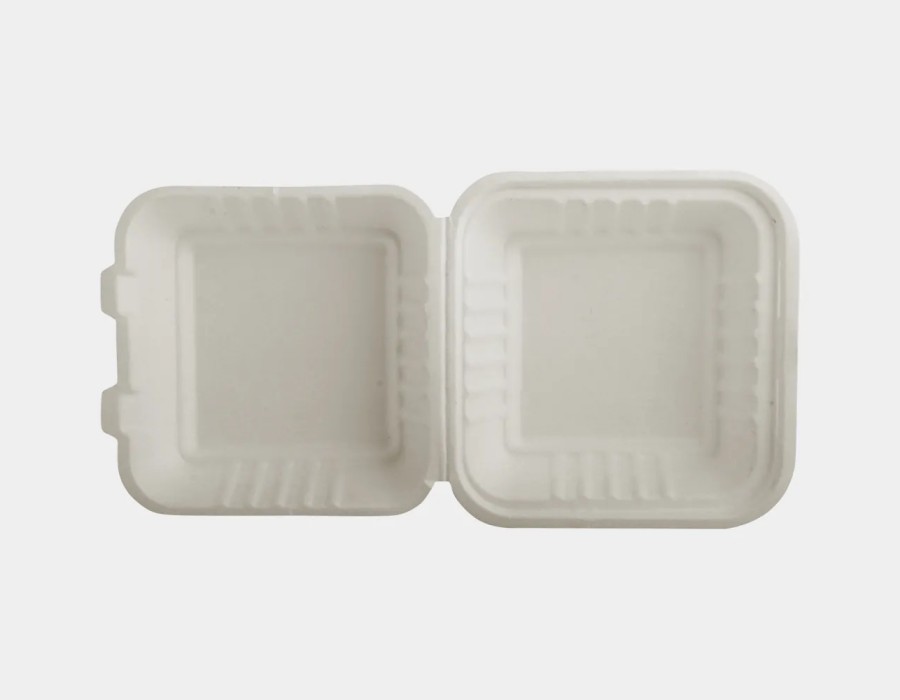As the world grapples with the growing issue of plastic pollution, biodegradable food containers have emerged as a practical and eco-friendly solution. Traditional plastic containers, which can take hundreds of years to decompose, are clogging landfills, polluting oceans, and harming wildlife. In contrast, biodegradable containers offer a sustainable alternative, breaking down naturally and reducing environmental harm. This shift in packaging is transforming industries, especially the food and beverage sector, where single-use plastics have dominated for decades.
The Environmental Impact of Plastic Food Containers
Plastic pollution is one of the most pressing environmental challenges today. Each year, millions of tons of plastic waste end up in landfills and oceans, where they break down into microplastics, affecting ecosystems and human health. The food industry, in particular, is a significant contributor to this problem due to its reliance on single-use plastic containers for packaging, takeout, and delivery services.
Biodegradable food containers, made from materials like plant fibers, sugarcane, and cornstarch, offer a solution by decomposing naturally within a few weeks to months. Unlike plastic, which can take centuries to break down, these containers return to the earth without leaving toxic residues or contributing to the growing microplastic problem.
How Biodegradable Food Containers Are Made
Biodegradable food containers are crafted from renewable, plant-based resources such as bagasse (sugarcane fiber), cornstarch, and wheat straw. These materials are processed into durable containers that can hold hot and cold foods while being environmentally friendly. Bagasse, for example, is the fibrous residue left after sugarcane stalks are pressed for juice. It’s a waste product that would otherwise be discarded or burned, making it a perfect raw material for sustainable packaging.
By using agricultural byproducts to create biodegradable containers, manufacturers reduce waste at both ends of the supply chain—diverting materials from landfills and creating products that won’t linger in the environment for centuries.
Benefits for Businesses and Consumers
The rise of biodegradable food containers isn’t just about protecting the planet—it also offers tangible benefits for businesses and consumers. For eco-conscious businesses, switching to biodegradable packaging demonstrates a commitment to sustainability, which can attract customers who prioritize environmentally responsible brands. Many consumers today are willing to pay more for products that use sustainable packaging.
For consumers, biodegradable food containers provide a guilt-free option for takeout and meal prep. As awareness of plastic’s harmful effects grows, more people are seeking out eco-friendly alternatives that align with their values. These containers are also convenient, as they can often be composted at home or in industrial composting facilities, further reducing waste.
The Role of Biodegradable Containers in Reducing Plastic Pollution
Biodegradable food containers play a critical role in reducing the world’s reliance on plastic. By offering an alternative that decomposes quickly and safely, they help limit the amount of plastic waste entering landfills and oceans. Furthermore, as more companies and consumers make the switch to biodegradable options, the demand for plastic will decrease, driving innovation in sustainable packaging solutions.
While biodegradable containers are not a silver bullet for the plastic pollution crisis, they are a significant step in the right direction. Combined with other waste-reduction initiatives, such as recycling and composting, they form part of a broader strategy to combat plastic pollution and protect the environment for future generations.
Conclusion
The rise of biodegradable food containers represents a promising shift toward sustainable packaging and a solution to the global plastic pollution crisis. By choosing biodegradable containers, businesses and consumers can make a positive impact on the environment, reducing waste and supporting a more sustainable future. With continued innovation and commitment to eco-friendly practices, biodegradable food containers have the potential to replace traditional plastics and contribute to a cleaner, healthier planet.





Comments